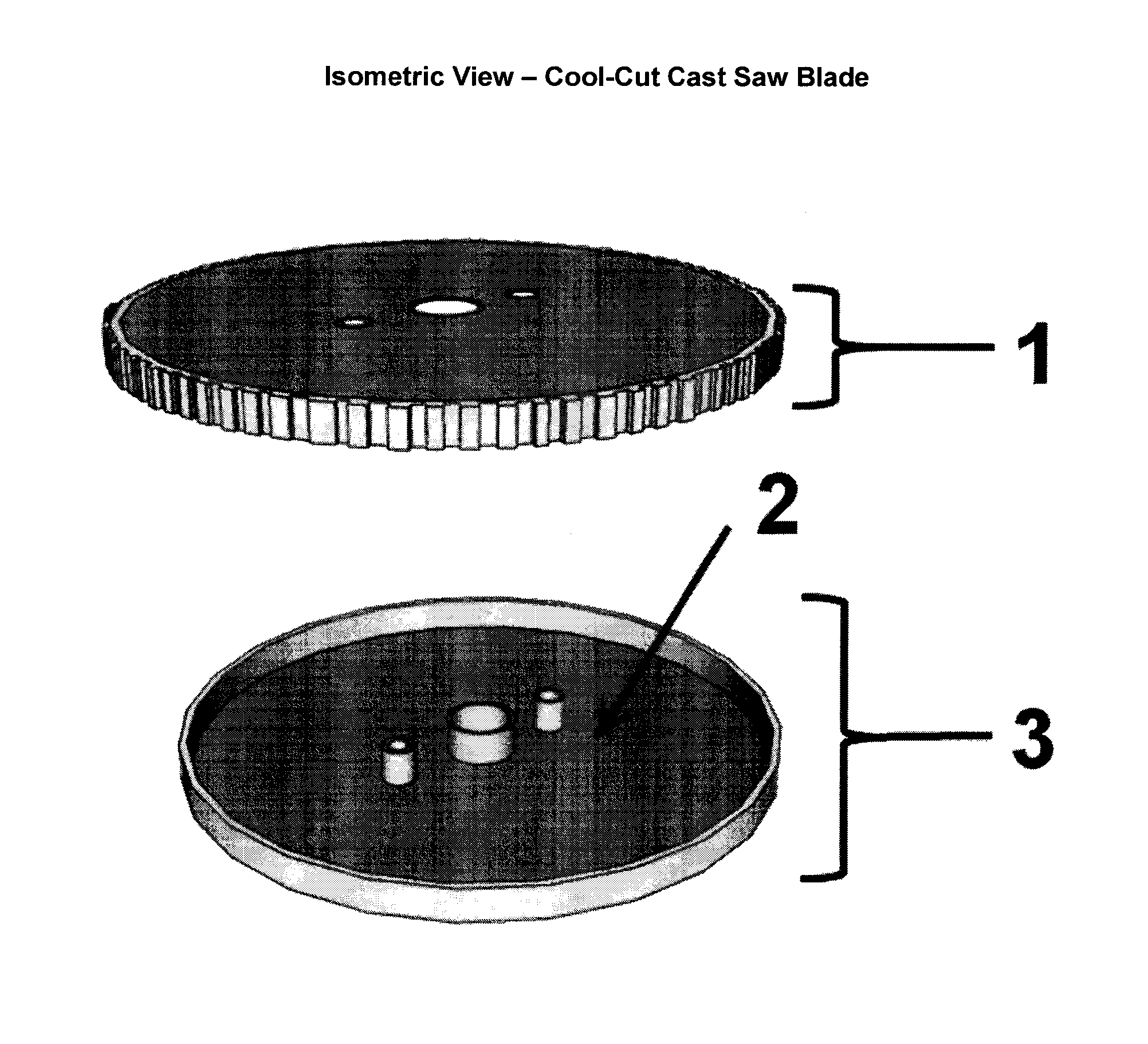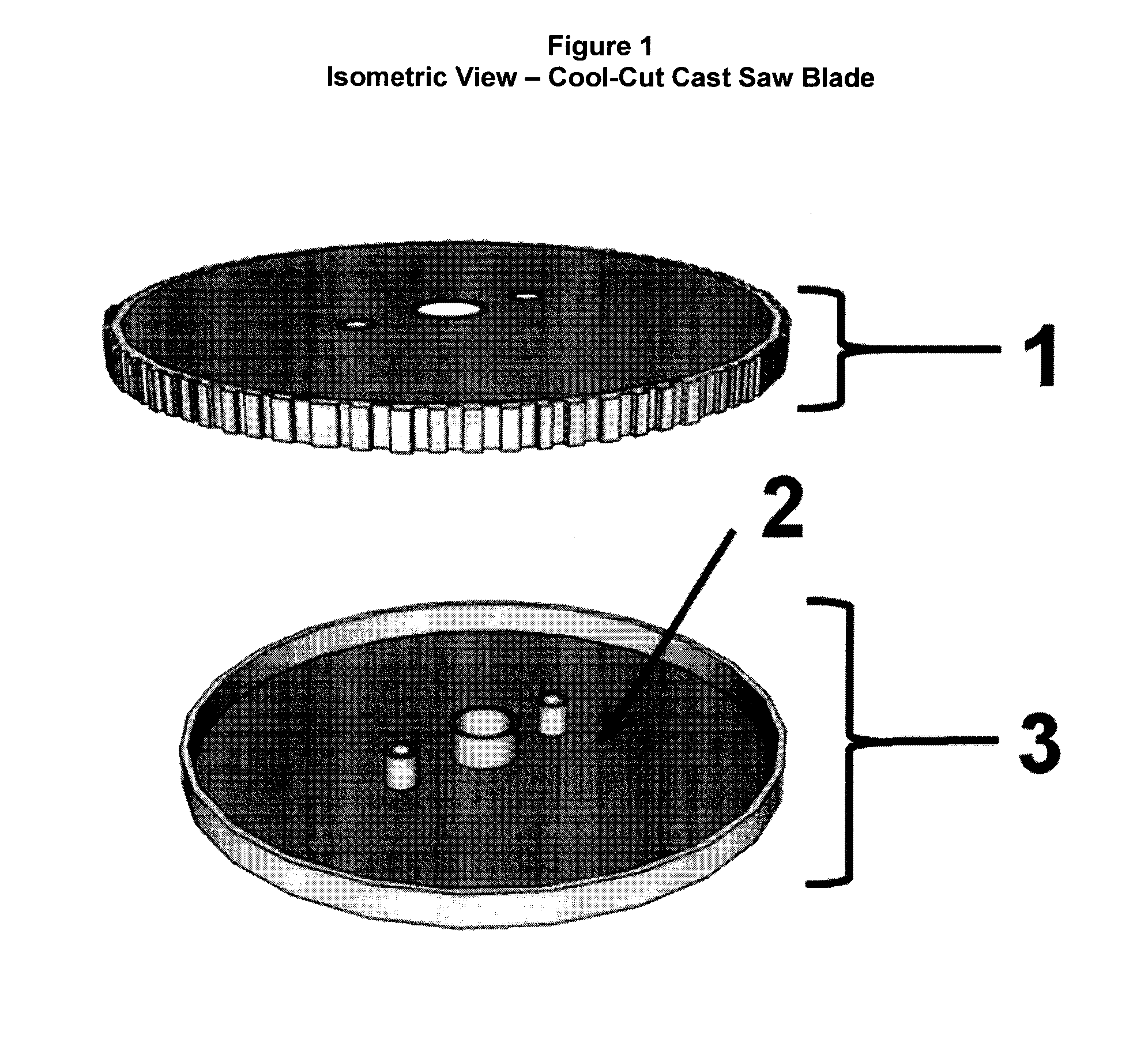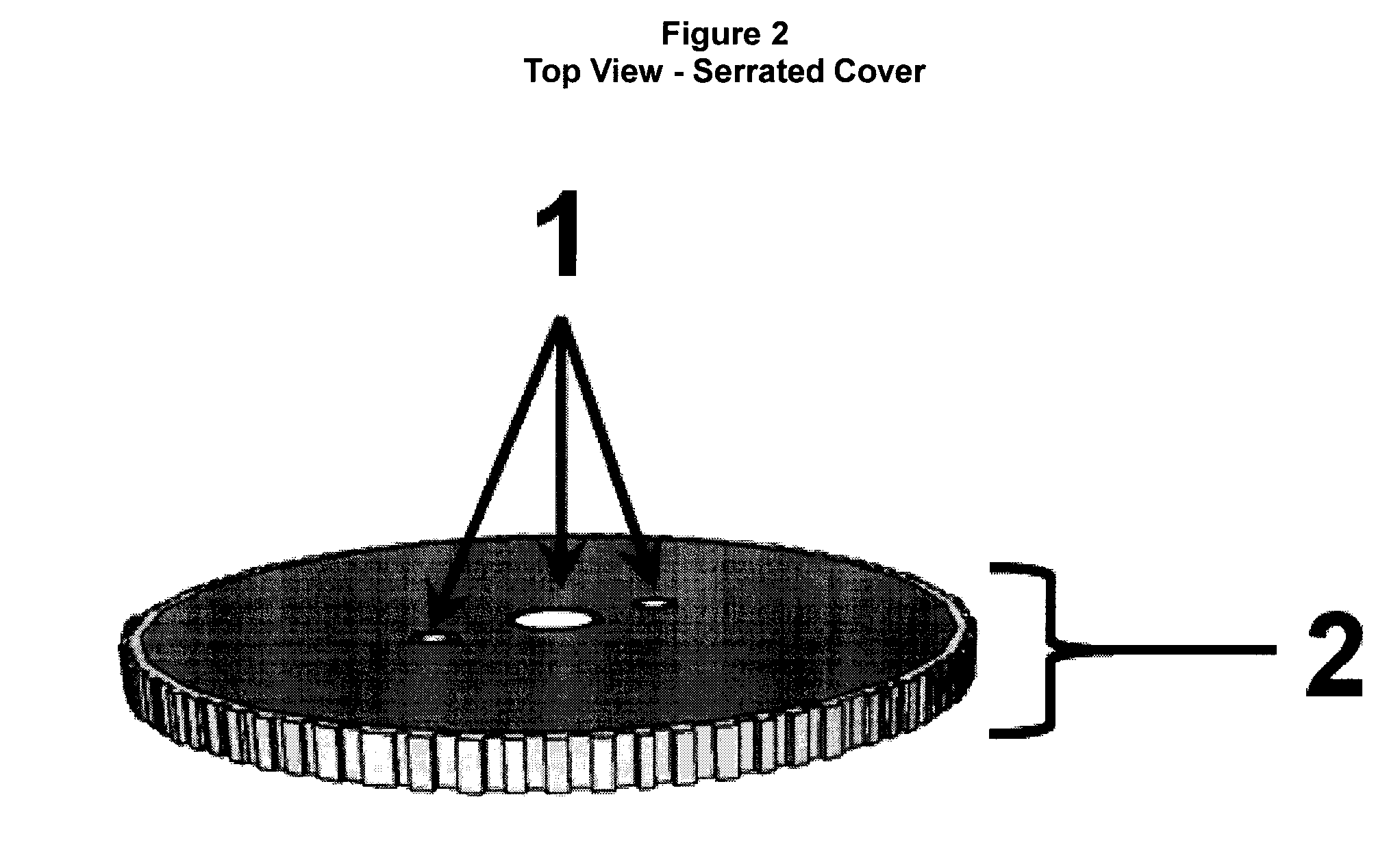Cool cut cast saw blade
a cast saw blade and cooling technology, applied in the field of cool cutting cast saw blades, can solve the problems of inability to dissipate heat, saw blades become so hot that patients can burn, and the patient can be easily burned, so as to reduce the surface temperature of the cast saw blade, reduce patient thermal burns, and easy to accept
- Summary
- Abstract
- Description
- Claims
- Application Information
AI Technical Summary
Benefits of technology
Problems solved by technology
Method used
Image
Examples
Embodiment Construction
[0029]This device consists of three components. The assembly process is described below. First is a “bottom dish”, made of tungsten carbide or similar material, with holes machined to fit into a cast saw assembly and including any necessary structural supports. Second, and inside that bottom dish, “liquid” Gallium is poured into the dish. Third, a “serrated cover” made of tungsten carbide or similar material will fit over the dish and seal in the gallium as well as contain holes machined to fit into a cast saw assembly, including any necessary structural supports, and a serrated outer edge or blade used to cut a fiberglass or plaster cast. The serrated cover will be fused to the bottom dish trapping the liquid inside. This entire completed assembly is known as the cool-cut cast saw blade. This device is meant to be used as the blade for a cast saw which works by vibrating or oscillating a cast saw blade to cut through a plaster or fiberglass cast, but its application is not limited ...
PUM
| Property | Measurement | Unit |
|---|---|---|
| melting point | aaaaa | aaaaa |
| melting point | aaaaa | aaaaa |
| melting point | aaaaa | aaaaa |
Abstract
Description
Claims
Application Information
 Login to View More
Login to View More - R&D
- Intellectual Property
- Life Sciences
- Materials
- Tech Scout
- Unparalleled Data Quality
- Higher Quality Content
- 60% Fewer Hallucinations
Browse by: Latest US Patents, China's latest patents, Technical Efficacy Thesaurus, Application Domain, Technology Topic, Popular Technical Reports.
© 2025 PatSnap. All rights reserved.Legal|Privacy policy|Modern Slavery Act Transparency Statement|Sitemap|About US| Contact US: help@patsnap.com



